I’ve spent the last month or so shooting with a Leica M [typ 240]. I bought it as temporary replacement camera after my M262 had to pay a little trip to Germany for some repair work. The Leica M240 has done me proud whilst the M262 has been away, though the experience has not be without a couple of surprises, so I thought I’d write a little bit about what I’ve found.
First off, I should probably say that this isn’t going to be a proper review – I’ve written so many reviews about Leica rangefinder cameras and their subtle differences that the idea of writing my thoughts about every facet of this camera just doesn’t appeal at all – and that’s despite this one having more to offer than any that I’ve shot before. That said, even in the short time I’ve owned a Leica M240, it’s confused me with what seems like an obvious short coming, changed my mind about one feature that I had written of as pretty much useless to me, proved that another one of it’s highlight features is indeed something I have no interest in, and perhaps unfortunately (since I can’t afford one) left me with big a chunk of Leica M10 GAS…
The Leica M240
The Leica M [typ 240] (or M240 for short) was the first Leica to adopt the odd naming convention that broke away from the M# convention of yore. Thankfully with the M10 they’ve returned to the old system. In case you’re confused, the M240 was the camera that followed the Leica M9. It was the third major iteration of colour digital Leica M rangefinder, and the first to use a CMOS type sensor.
The use of a CMOS sensor allowed Leica to include two key features that the previous M9 didn’t have. These were live-view – using the screen on the back or a slot in electronic viewfinder – and video. Of course with these features comes a fairly significant increase in menu options too, though I must admit, I was surprised how simple the menu remains given the extra features on offer.
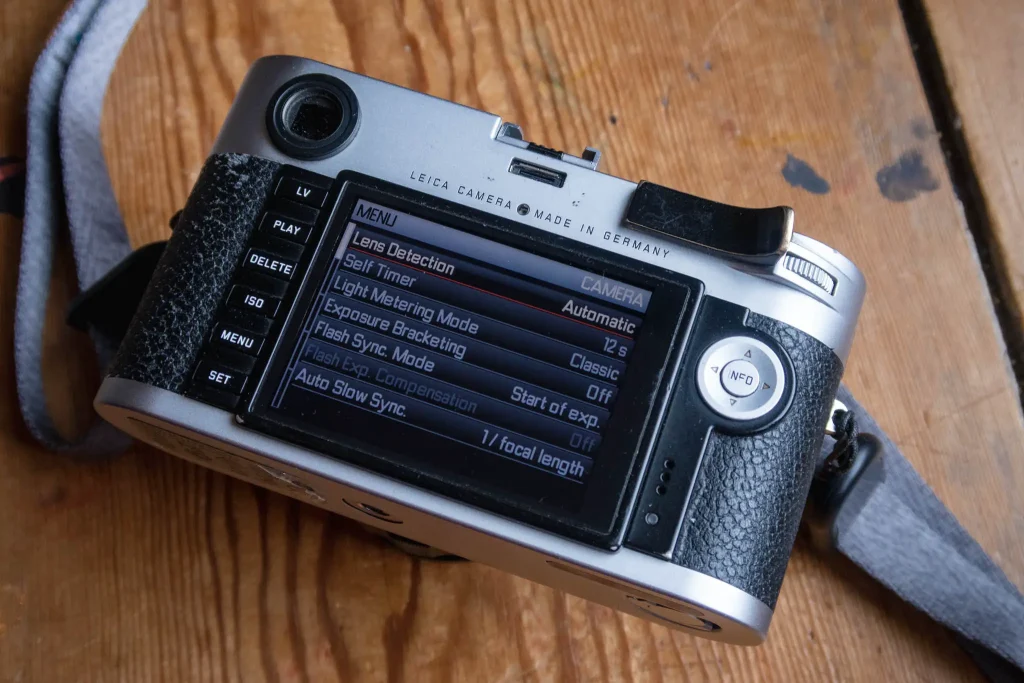
Skipping the Leica M240
When I was looking at replacing my M9 with a newer model – which I did in large part for the benefit of a better screen on the back – I chose to skip the Leica M240 due to the fact that I didn’t feel like the swathe of features it had compared to the later M262 offered me any advantage. The M262 was the stripped-back camera that came after the M240 and before the M10 – and as regular readers of this website will know, I do like a stripped-back camera.
Leica must have listened to some of their users who felt that they didn’t need a lot of the features that the Leica M240 offered them, and created a camera that felt a little more like a natural progression from the M9. The M9 was a simple digital rangefinder with limited features and menu options, the M262 has even less in the menu and a slightly improved user interface. As such, it felt like it’d be the perfect camera for me.
By comparison, the Leica M240 had a lot of features – many of which, as I’ve alluded to, were seen by some as not needed on a Leica M rangefinder. The view taken by some Leica users when the M240 was released was that features like live-view and video had no place on a Leica. To be honest, I think I shared those views – and though I might not been inclined to articulate them quite as vociferously as some – it was those views that swayed me toward the M262.
But, when my M262 needed to go to German camera hospital for what I guessed might be a significant amount of time (as is often the case), I figured I had little to loose trying out an M240 for a few weeks/months. I soon found one on eBay for a price I was happy to pay and a few days later I had a chrome-finished M240 to keep my company whilst my poorly M262 was seen to by the camera-doctors.
Relief in familiarity
My first surprise was – as any Leica M240 user would likely tell you – just how familiar it felt. Something about the idea that it had all these weird and wonderful features made me expect a camera that felt different. Of course it didn’t. It was the same shape as the M262 I was used to, maybe a touch heavier, but not really noticeably in the hand. I can’t tell you how relieved I was about this – I know that probably sounds daft, but my Leica rangefinders are default cameras that I rely on when I want to shoot without any thought to the camera. This is the reason I was so keen not to be without one for a few months – so when the M240 didn’t initially seem all that different to the M262 I was really pleased!
Screen colours
This relief quickly turned to intrigue. This thing has live-view, and video. These were features I wanted to explore whilst I had this camera – though I really had very low expectations that they would do much for me. In fact, I pressed the LV (for live-view) button on the camera before I even took a photo. It was at this early stage that I noticed the first thing that has continued to make me scratch my head throughout the time I used the camera.
The image on the back screen of the Leica M240 is very cool toned and unsaturated. Bringing up the live-view display gave me what appeared to my taste to be a quite unpleasant representation of the world in front of the camera. I pressed the shutter button to take a photo and was fairly disappointed to see that the image the live-view screen had showed me was now captured as a photo. With some apprehension, I took the memory card out of the camera and put it into the computer. Fortunately, when the image popped up in Lightroom, it was fine – or at least it was little different to a photo that I might have expected out of the M262.
Now, I should just say at this point that when I first got my Leica M262 I found the exact opposite. The image on viewfinder of that camera is very warm – yet when the images are loaded onto the computer they are less so. The thing is, I much prefer the warm display on the M262. It’s still inaccurate, but at least the photos look pleasant enough.
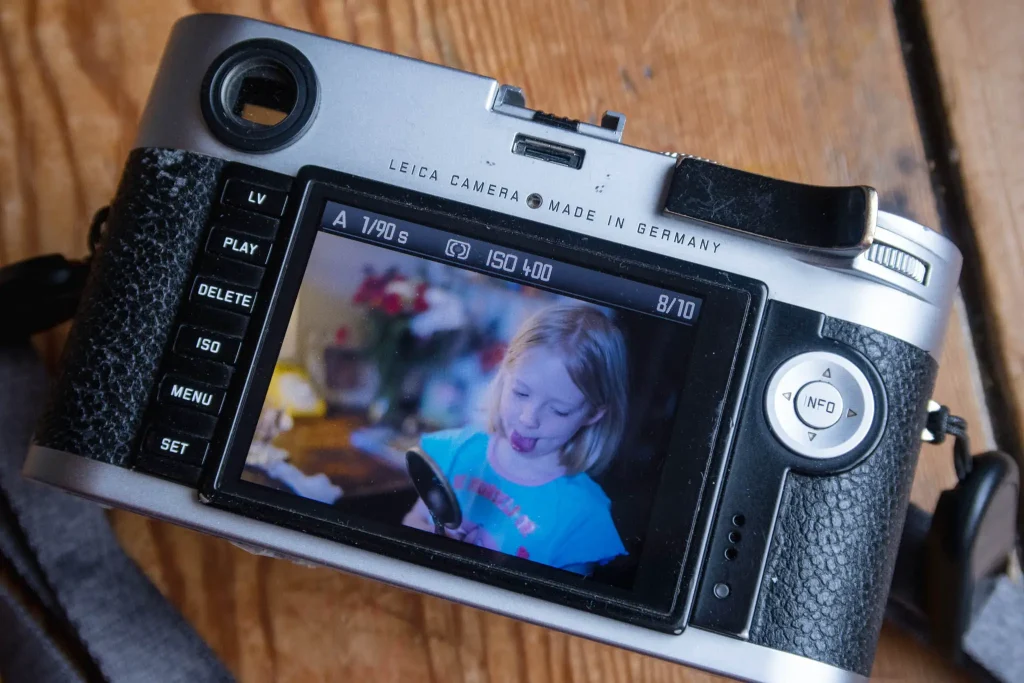
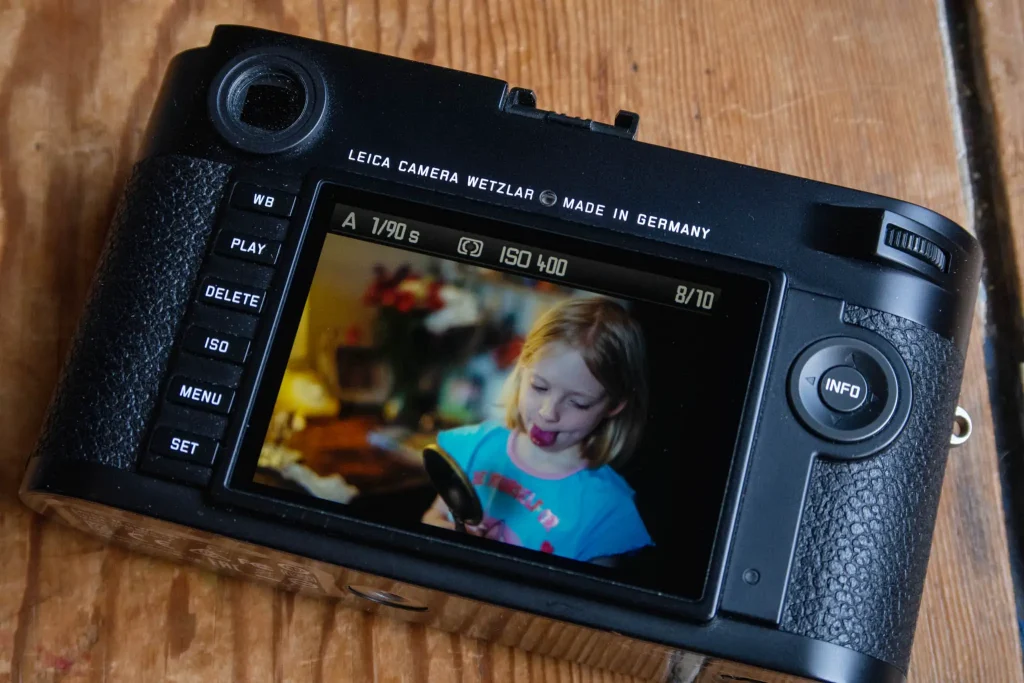
This might sound like a small criticism, and I’m sure many wouldn’t even notice or care, but actually it goes back to what I was saying earlier about familiarity. I really have found it quite distracting to have an image preview that’s different to what I’m used to, especially since it’s both inaccurate and in a way that’s unappealing to my tastes. Funnily enough, when searching to find out if I was the only one to notice this, I found this post on a forum where someone finds the same issue, but prefers the cooler screen of his Leica M240 to the later “M-P” version of the M240 which seems to have the same warmer screen as my M262. A personal taste thing of course, but you’d think that a Leica camera would have a screen that was at least mostly accurate to the end photo?!
One way or another, in the time I’ve been using the camera, I’ve not got used to this little issue, though I have at least learned to live with it. It’s just become a reason not to use the screen as much as I might have. A blessing in some ways, though frustratingly it’s taken the edge off a feature I’ve enjoyed more than I expected to…
Live-view
I remember when live-view first started appearing on interchangeable lens digital cameras. Quite possibly because my camera at the time didn’t have it as a feature, I denied that I would ever find it useful. “I like to put my camera to my eye – this live-view lark just doesn’t appeal to me” was the sort of sentence I likely uttered.
Then I bought an early mirrorless camera – possibly a Panasonic or Sony, I can’t remember which came first – and I had to eat a load of humble pie. Live-view with any lens I liked was fun. A few years later I sold all my Nikon DLSR kit and switched to Sony full frame A7 cameras and began to realise just how useful it can be. And then I got a Sony A7riii that lets me touch the screen to pick the subject I want the camera to autofocus on! Basically, I’m sold on live-view these days – but, despite this fact, I didn’t think it would appeal to me on a Leica. I don’t need such features on my Leica rangefinders – these are “real cameras” that I use “properly”, I don’t need live-view with my real cameras!
Turns out that was bollocks too! My first experience discovering I like live-view on a rangefinder was had down the pub quite soon after I’d bought the Leica M240. I had recently bought a Nikon 50mm f/2 LTM lens and had mounted it on the M240. If you aren’t aware of these lenses, they focus down to about 40cm. They aren’t rangefinder coupled past 1m, but nonetheless they do focus that close. Focusing that close without rangefinder coupling is of course quite difficult… unless you have live-view. Just experimenting, I took a bunch of photos of my mates Canon AE1 – this was fun with a rangefinder; I could get used to this!
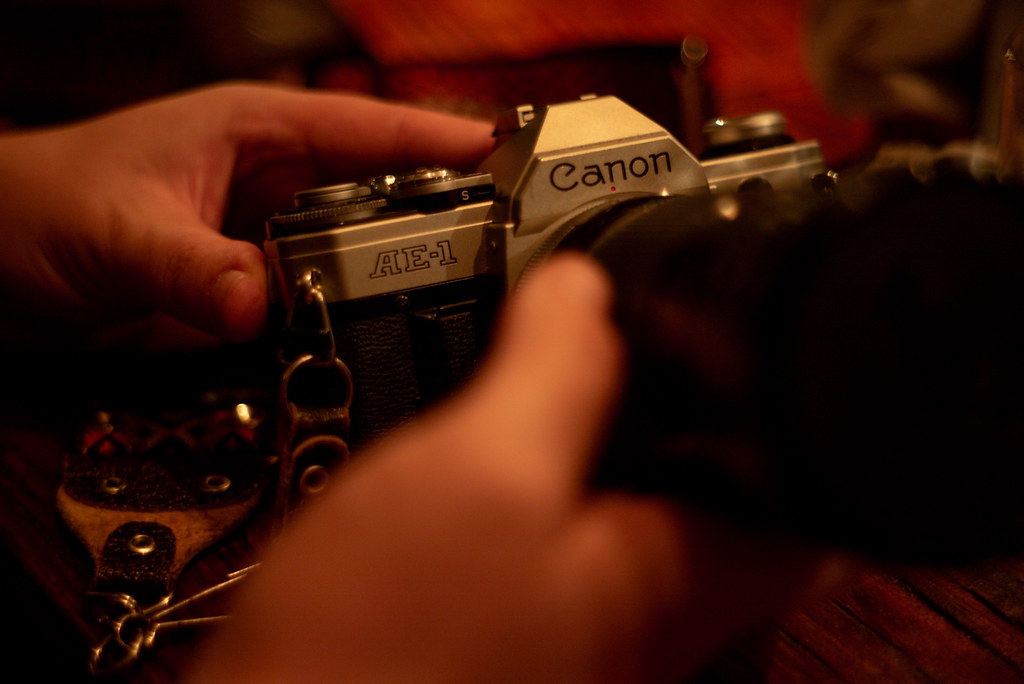
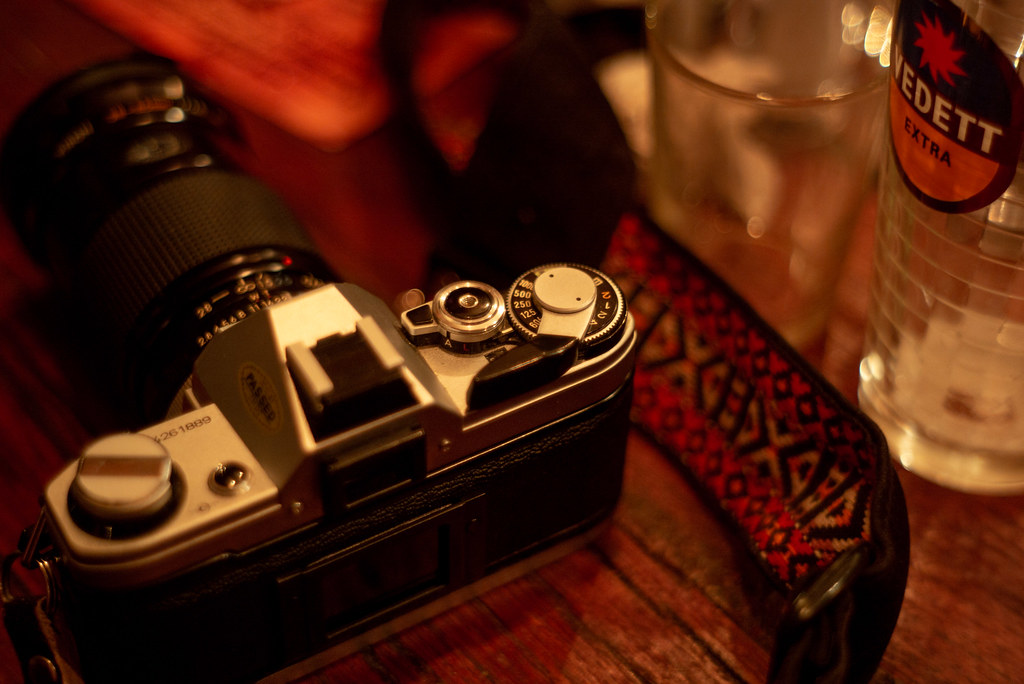
A week or so later I was on a shoot for work. We were using the Sony cameras for video, so as I often do, I was shooting stills with the Leica. We were shooting inside a large carpet manufacturers in Kidderminster and I was trying to get some slightly abstract well timed shots of the various goings on in the factory. Without even thinking about it, I started using the live-view. In fact, I caught myself using it a number of times without thinking. I’m used to focus peaking from shooting video with the Sony cameras, so it was such a short leap to press the LV button and take photos in a way that felt familiar.
Using it in this factory, a space where I needed to be aware of the timing of things that were happening around me, it just clicked for me. One of the advantages of live-view is the same as one of the advantages of rangefinder cameras – they both allow you to observe the world outside of the frame. I could get myself in position where something was about to happen, use the rangefinder or live-view to pick a point of focus, then whilst looking at the back of the camera I could use my peripheral vision to judge the timing of whatever I was taking a photo of whilst maintaining focus confirmation.
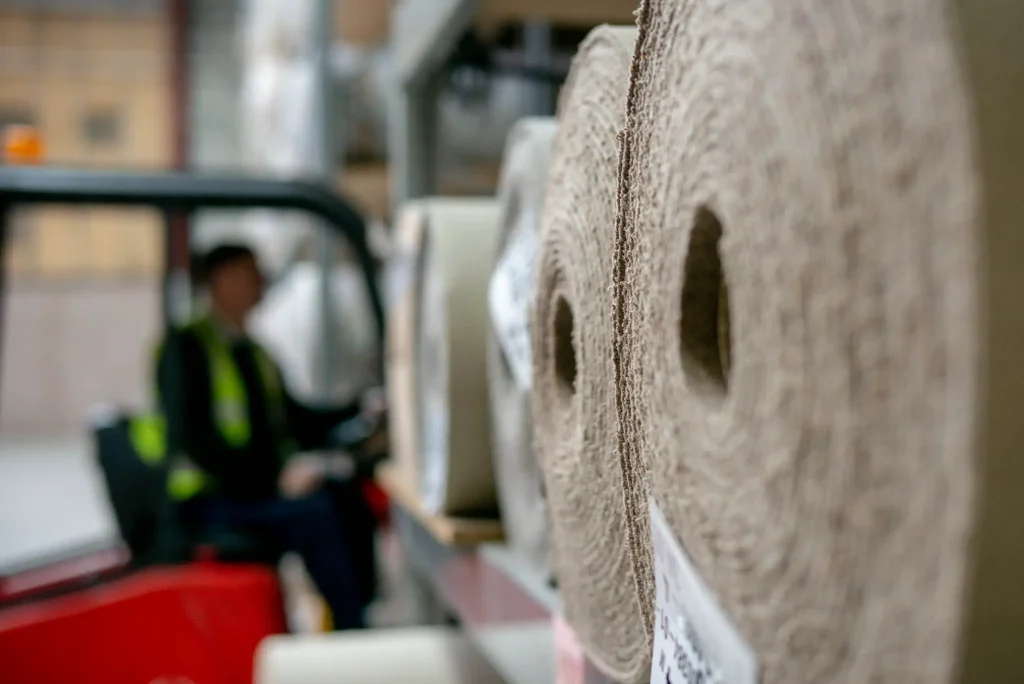
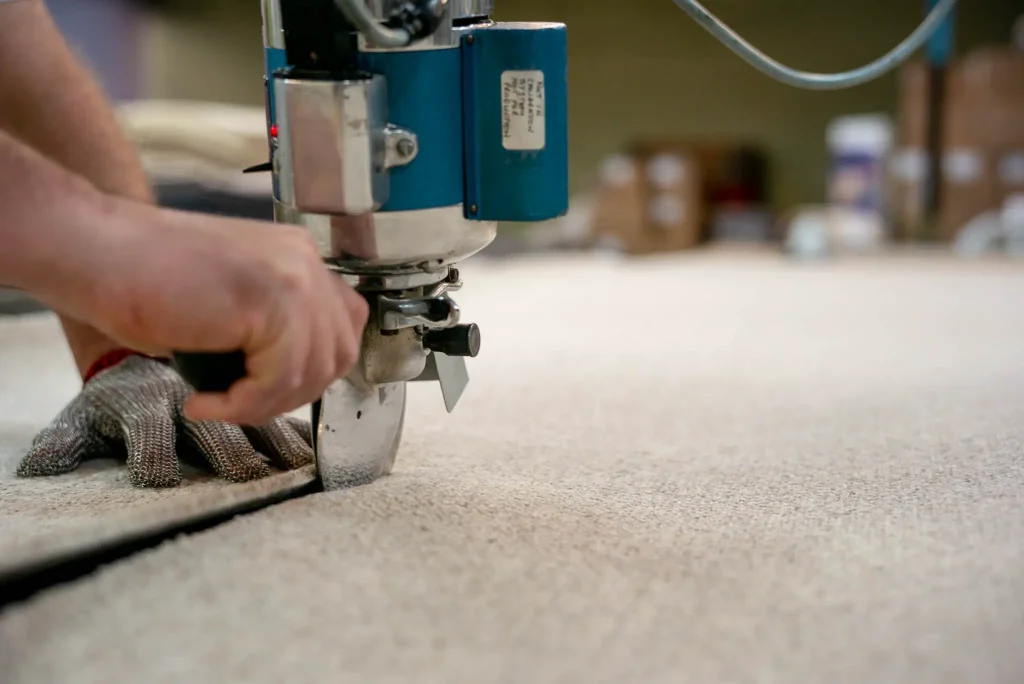
I do this all the time with the Sony cameras, yet had never joined the dots and worked out that it might be something I’d enjoy or find use for with a rangefinder. I was wrong! Live-view brings something extra to a type of camera I had previously (possibly quite stubbornly) felt couldn’t be improved. More humble pie for me!
Video. Just no.
This made me think; maybe I could get on with the video features too…? No. I can’t. I admit, I’m a bit of a snob with stills cameras. I like them nice and simple, low tech, etc. When it comes to making video, things are different! I use 3rd generation Sony A7 cameras with a cage and a big hand grip with a mic and an Atomos Ninja V external screen bolted to it. This screen has very good focus peaking and an exposure waveform overlay that I find invaluable! I can’t even work out how to hold the Leica M240 for video, and whilst it has focus peaking, it certainly doesn’t have the features the Atomos brings to the table. It doesn’t even have any way to connect the Atomos to it. So, yeah, as I said, video is just not something I want to do with a Leica M camera!
A couple more photos
M10 GAS
Now, I’m writing this after my M262 has come back from Germany (it only took a couple of months!!), and I’m now looking to part with the Leica M240 and put the money back into my business (where I borrowed it from). I can’t keep it – my business partner has vetoed that idea. And given the choice between keeping the M262 and the M240, despite what the Leica M240 brings to the table, it doesn’t win out over M262. This might be the better screen, or it might be residual live-view-denial telling me that the more simple M262 is a better camera for me. Either way, it’s the M262 that I want to keep…
Though I must admit, this experience has had me thinking that an M10 would be better suited to me now. It has a better screen, live-view, no video and even has a ISO dial (like you might find on a Fuji…). Unfortunately, my business partner has also vetoed the idea of me selling both M240 and M262 to buy an M10. So the M262 is going to stay, and the Leica M240 go. I guess that how much I miss the live-view will define how soon, if at all, I start saving my pennies for a swap. Damn digital cameras – I can control film camera GAS quite well these days, but these digital buggers still get me!
Share this post:













Comments
Simon on Leica M [typ 240] Review – A brief relationship
Comment posted: 11/02/2019
Comment posted: 11/02/2019
Danny on Leica M [typ 240] Review – A brief relationship
Comment posted: 11/02/2019
Comment posted: 11/02/2019
LASousa on Leica M [typ 240] Review – A brief relationship
Comment posted: 11/02/2019
Menu. A fetish with the M10 is its simplified menu. Yes, the M240's menu is busier, but once I have the camera set up to my liking I don't really venture into the menu often. The settings I use (format and manual or auto lens designation) pop up first on the main menu and with 2 clicks both actions are completed. In the setup menu, the most used setting is white balance. It is the first position on the menu, and setting WB on a grey card or to a preset is a matter of 3 or 4 clicks.
Colors. I love the colors from the sensor as a whole, but one thing I don't like is rendering of skin tones. They take on a garish orange tint that is hard to process in LR. I did find a custom LR preset that helps a lot, but it would be nice to have natural skin tones straight from the camera. From what I gather, skin tones have better rendering with the M10. Changing from color to black and white takes a lot of menu meandering and I wish there was a way to place this setting into a favorites menu as in the M10 (I think). There is an M240 feature that can get you there with "User Settings", and right now I can't recall how easily accessible that is.
In Camera BW filter Simulations. I do use this feature fairly often as an alternative to using a screw in BW filter. The renderings are quite good as a whole, and this feature is not contained in the M10 which relegates one to only the lens filter option.
Card Writing Speed. Using the right SD card is key here. Some cards are woefully slow. With the wrong card, the wait before the shutter is again available is bad. I have had good luck with Sony's latest fast SD cards, improving this condition quite well. But even then, it's not close to other modern cameras. That said, I don't shoot Leicas for rapidity.
Start Up. The M240 is a bit slow on the uptake, but I generally leave the camera on while on photo walks so not a real issue.
Lock-ups. This happens with the M240 from time to time. The camera becomes entirely unresponsive. The fix is to remove the bottom plate and remove the battery, but this is not a solution for when the decisive moment is at hand.
Low Light Performance. Another M10 fetish is better performance at high ISO. I have gotten perfectly good images with the M-240 at ISO 2000 and at 3200 the images are still manageable with a small amount of noise reduction in LR. And I like the grainy renderings for some scenes.
Live View. This was a heretical change from earlier Leicas. I find it to be a useful feature at times. For example, I am in a coffee shop with the camera sitting on a Manfrotto table top tripod. I can get focus on a defined distance or subject and with a remote release or the self timer, get stealthy images while at the same time getting real time information on exposure. Using the zoom focus button on the front of the camera along with Live View is a good aid to focus in these situations.
Ergonomics. Another M10 fetish. The M10 is akin in size to an M6TTL and this is a benefit. The M240 is wide and bulky. Weight savings from the M10 may be there, but with a Thumbs Up in the hot shoe, the M240 feels good and substantial in the hand.
ISO setting. The M10 has the new ISO wheel on the top left. To me this seems like a hassle. On the M240 it's easy to change ISO by simply pressing the dedicated ISO button and turning the thumb adjustment wheel.
The EVF. I have one for the M240 and don't use it that much but at times it helps with critical focus. People get all gnarled up about refresh rates and such, but the M240's EVF is fine for its limited uses.
Focus Peaking. For the M240, forget it. This is a useful feature for me that I enjoyed using the Fuji system which had a great focus peaking aid. On the M240 the highlight from focus peaking is often not apparent at all. It's a good thing to have for visually challenged oldsters like me. From what I understand the M10 has substantially improved this feature and this is an attractive change.
Comment posted: 11/02/2019
John Lockwood on Leica M [typ 240] Review – A brief relationship
Comment posted: 11/02/2019
Comment posted: 11/02/2019
Comment posted: 11/02/2019
Gerardo Guillen on Leica M [typ 240] Review – A brief relationship
Comment posted: 11/02/2019
Comment posted: 11/02/2019
Rollin Banderob on Leica M [typ 240] Review – A brief relationship
Comment posted: 12/02/2019
I find the focus peaking on my M10 better than the Sony's I've used. I'm an auto-ISO guy so the dial is nice for the little I use it. High ISO performance a must - wish it was even better. JPG Settings can be on the user assignable first screen and from that quickly turn on/off Monochrome. On same first menus screen can have File Format to pick DNG or DNG JPG or JPG only.
When you get the M10 I'll be interested to hear how you like the B&W jpg vs. your Monochrome. And if you find the viewfinder better, as many report. Size/weight is perfect ;-)
mechanicalportraitist on Leica M [typ 240] Review – A brief relationship
Comment posted: 12/02/2019
Sean on Leica M [typ 240] Review – A brief relationship
Comment posted: 13/02/2019
Any chance you're planning to do a write up on that Nokton 50mm f/1.2? I need a new 50mm lens.
Comment posted: 13/02/2019
Ming on Leica M [typ 240] Review – A brief relationship
Comment posted: 13/02/2019
Comment posted: 13/02/2019
A Love Affair With The Leica M-D 262 – by Ong Sien Hong - 35mmc on Leica M [typ 240] Review – A brief relationship
Comment posted: 03/05/2019
Initial experiments with a Leica M10-P and a Nikon 35mm 2.8 PC Shift Lens - 35mmc on Leica M [typ 240] Review – A brief relationship
Comment posted: 20/05/2019
Carl Garrard on Leica M [typ 240] Review – A brief relationship
Comment posted: 20/12/2021
I just picked up a Leica M-P Typ 240 to compliment my "new" M9-P I bought a couple weeks ago. I've tried all of the digital M types and my heartfelt favorites are the M8 and M9-P (equally), then the Typ 262 in that order. The even newer M-P Typ 240 purchase just opens up addtional opportunities of using a digital "M" as a multi-purpose tool. Using an M this way does not give me the same "fundamental photography" pleasure as the M8 or M-9P do, but, what it does give me is the ability to scratch the inevitable itch that eventually comes to every M8/9/ME user - the desire to use their M for other tasks theirs just cannot do (macro work, adapting other lenses for example).
Although I know right from the gate that my M-P Typ 240 won't get as much use as my new heart winning M9-P, it will however keep me from having that inevitable internal debate of owning just one "old" or "new" M body. In short, getting two cameras- a classic and a modern type, solves the damnable inadequacy issue that arises in all of us when you own just one type.
Additionally, I really like the simplified look and small upgrades the MP versions offer. A simple exterior is my kind of camera- adverts belong on billboards, not on cameras. Lastly, it's kind of neat that these two are sort of a match- but different enough to stand out on my desk when I go to grab one for a shoot. One has a brightline window, the other does not.
I posted this as a person of experience. Having run the gamut of all the M's, I've settled on these two as my main M system and I suggest to others who can't shake the M bug to do something similar. I've read all too often from M10 owners how much they miss an M9 or M8 variant because of the simplicity and CCD image quality. Why torture yourself? You can get two M-P's (old and new) for the same price as one M10.
(Stay focused)
-Carl
p.s. My M8 is still around for those who are wondering. It serves specific duty now, monochrome and infrared imaging only. I've had it for years and purchased it when M8's were at their lowest prices. So it's not a financial burden to have it around, and selling it won't yield me that much cash, and I have no desire to sell it anyways since its' my favorite M of all time that still serves some legitimate purpose.
Comment posted: 20/12/2021